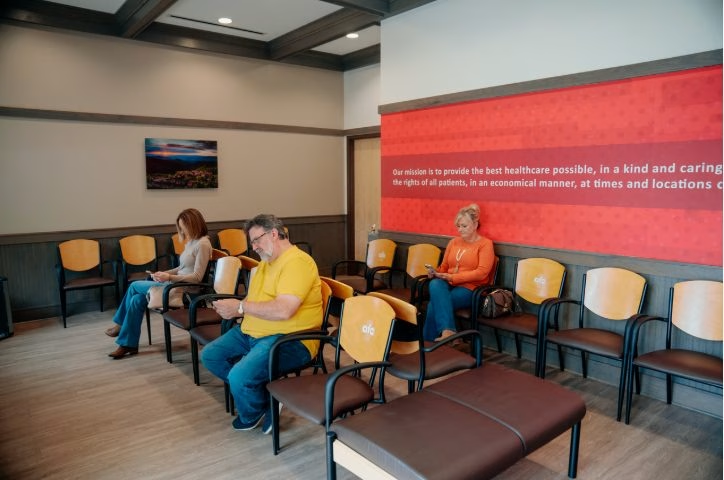by | May 13, 2024 | Healthy Living

10 Common Outdoor Injuries
As the weather warms and nature beckons, many of us eagerly embrace outdoor activities, from sports to leisurely strolls. However, with increased activity comes a higher risk of injury. Here’s a comprehensive guide to the top 10 common springtime injuries and how to prevent them:
1. Ankle Sprains:
Ankle sprains can happen unexpectedly, whether you’re an athlete on the field or simply navigating uneven terrain such as stepping down from a curb. Ankle sprains are the most reported injury among college athletes and women are more susceptible to them than men. Once you’ve sprained an ankle, it’s easier to do so again because the weakened and stretched ligaments contribute to Chronic Ankle Instability (CAI).
To prevent ankle injuries wear shoes that fit properly, are designed for the activity, secure your foot securely, and are not worn out or lack structural integrity. Rest, ice, compression, over-the-counter pain relief, and a slow return to normal activity will help heal an ankle sprain.
2. Wrist Fractures:
High-impact falls, such as those experienced during biking or skateboarding, can result in wrist fractures. Wearing wrist splints and avoiding risky maneuvers can significantly reduce this risk.
The risk of wrist fractures increases with age and is one of the most common fractures in those over 50 and most result from standing height falls. Osteoporosis, frequent alcohol intake, current smoking, and high blood phosphate levels are all associated with an increase in risk.
3. Shin Splints:
Common among runners and dancers, shin splints occur due to overuse or excessive strain on the lower leg. They are felt as tenderness, soreness, and possibly pain along the inner shin bone with mild swelling. If not cared for properly, shin splints can lead to a stress reaction or even a stress fracture.
To Avoid Shin Splints:
- Increase higher impact exercises and intensity gradually to allow the body time to adjust.
- Reduce the overall impact of your workout by including some cross-training exercises such as biking or swimming.
- Choose the correct shoes with enough support and replace them regularly.
- Consider arch supports and shock-absorbing insoles.
- Include strength training in your workout to help strengthen and stabilize legs, ankles, hips, and core muscles to prepare them for higher-impact activities.
- Analyze your running form through video to identify any patterns that may contribute to shin splints.
4. Rotator Cuff Injury:
Repetitive overhead movements, prevalent in sports like volleyball and baseball, can lead to rotator cuff tears. When a rotator cuff injury occurs the shoulder is weakened, has a decreased range of motion, and may be painful when carrying out basic daily activities such as brushing hair and getting dressed. Age plays a role in these injuries as people remain active and tendons weaken with age.
Recovery from a rotator cuff injury involves rest, ice, stretching, and possibly physical therapy. Practice proper form, engage in regular stretching, and seek medical attention if symptoms arise.
5. ACL Tears:
Non-contact sports involving sudden stops or pivoting, such as soccer and basketball, can increase the risk of ACL tears. Anterior Cruciate Ligament (ACL) tears are serious injuries accounting for almost half of all knee injuries in the United States.
Common indicators are the knee giving way, decreased range of motion, and difficulty walking. When the injury occurs patients often hear a “pop” and deep knee pain. About 70% experience sudden swelling caused by bleeding in the joint. Females are at increased risk of ACL injury due to looser knee joints, a higher range of motion than men, and less muscle mass needed for stabilization.
Tips for avoiding ACL injury:
- Avoid exercising when overly tired
- Build strength evenly across muscle groups
- Don’t forget to work on flexibility and strength
- Eat a healthy diet so your body has what it needs for your active lifestyle
6. Plantar Fasciitis:
Characterized by inflammation of the tissue on the bottom of the foot, plantar fasciitis can be excruciating for runners and active individuals. For 85% of sufferers, the cause is unknown, though many have tight calf and back of leg muscles, flat feet, or high arches. Plantar fasciitis affects 10% of the general population and the same percentage of runners.
To avoid developing this painful issue that feels worse after exercising, make sure your shoes have the support your feet need and aren’t worn out, lose weight if needed, and change your exercise routine around so your feet don’t always take the brunt of it.
Additionally, rest, ice, over-the-counter pain medicine, and lower-impact activities can bring relief.
7. Achilles Tendonitis:
Overuse or repetitive stress on the Achilles tendon which connects the calf muscle to the heel can lead to inflammation and stiffness. Achilles tendonitis results from overuse and is common among younger athletes.
Care should be taken to always stretch the tendon thoroughly before and after exercise. Adding strengthening exercises like squats, calf raises, leg curls, leg extensions, lunges, and leg presses to your routine is also recommended.
Achilles Tendonitis Symptoms
- Inflammation
- Pain ranging from dull to severe
- Increased blood flow to the tendon
- Thickening of the tendon
8. Hamstring Injuries:
The hamstrings are the group of three thigh muscles on the back of the leg that cross the knee joint and end at the lower leg. They join the hamstring tendons near where the tendons attach to bones and injury can occur to one or more at a time. Hamstring injuries occur frequently in sports and account for 12-15% of all athletic injuries, especially in the spring when people up their activity level. Basketball, soccer, and track athletes are at increased risk as those sports require regular sprinting; injuries can be challenging to treat due to their high recurrence rate. Warm up adequately and practice proper technique to minimize risk.
9. Runner’s Knee:
Overuse and misalignment of the kneecap can result in runner’s knee, causing discomfort during activities like running and cycling. Women are at increased risk of runner’s knee, or patellofemoral syndrome and signs of it are pain when climbing stairs or squatting. Prolonged sitting with knees flexed can increase the pain. Misalignment occurs when the muscles around the knee and hip don’t keep the kneecap in place. Prioritizing evenly developed and strong leg muscles can help prevent runner’s knee.
10. Concussions:
Contact sports pose a risk of concussions, which can have serious long-term consequences. For those who play a contact sport, the odds of suffering a concussion are 19% each year, meaning the odds are a person will suffer a concussion over five years of participation in a contact sport. Football accounts for around 300,000 concussions per year in the United States and the risk of a recurring football-related concussion is 3-6 times higher on those who’ve already had one. Concussion rates among soccer players are comparable to those of football players.
Common Symptoms of Concussion
- Confusion
- Headache
- Dizziness or imbalance
- Memory loss
- Nausea or vomiting
- Ringing ears
- Difficulty concentrating
- Sensitivity to light
- Double or blurry vision
- Loss of smell or taste
- Trouble falling asleep
Invest in appropriate protective gear and prioritize safety protocols to mitigate this risk and the risk of recurring head trauma that can lead to chronic traumatic encephalopathy (CTE).
In the excitement of springtime activities, it’s crucial to prioritize safety and injury prevention. Listen to your body, use proper equipment, and seek medical attention promptly if injuries occur. With these precautions in place, you can fully enjoy the beauty of the outdoors without compromising your well-being. Visit our clinic for all your injury needs as you and your family get outdoors!


